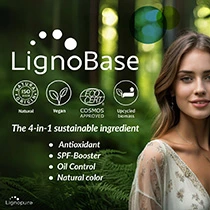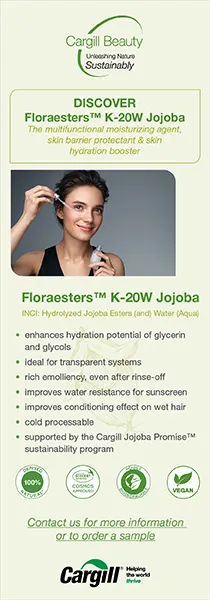Skin’s force field: Squalene found to offer more than protective effects, may boost indoor air quality

17 Jul 2023 --- Scientists from the US and Denmark have discovered that certain skin-protective compounds, like squalene, go beyond their functions and may help improve air quality. They found that ozone in the environment reacts with the oils and lipids on our skin, particularly squalene, which results in the creation of our own “personal oxidation fields of protection.”
According to their recent publication, simply having both people and ozone present indoors can produce significant levels of the “powerful” hydroxyl (OH) radicals, which are highly reactive molecules that play a vital role in cleaning the air and protecting human health.
The researchers remark that this setup surprisingly generated high concentrations of OH radicals. Even more intriguing is how ozone interacts with the oils and lipids on our skin, especially a substance called squalene, resulting in a unique “personal protection mechanism.”
In the environment, OH radicals are typically responsible for air-cleaning functions such as breaking down pollutants that can cause respiratory problems, decomposing ozone, preventing the growth of mold and mildew and reducing smog.
“My eyes were literally lit up when I read the study. Squalene and the oxidation of most polluting gasses have a far stronger correlation than I ever expected,” remarks Bryan See, VP of PhytoGaia, an industry supplier of squalene.
 Squalene is a commonly featured skin care ingredient, which prevents skin from lipid peroxidation, when healthy fats are damaged.“I am encouraged and eager to see additional squalene research regarding this possibility that applying squalene topically could potentially assist us in enhancing air quality.”
Squalene is a commonly featured skin care ingredient, which prevents skin from lipid peroxidation, when healthy fats are damaged.“I am encouraged and eager to see additional squalene research regarding this possibility that applying squalene topically could potentially assist us in enhancing air quality.”
Skin damaging effects of indoor free radicals
Led by the Max Planck Institute for Chemistry in Germany, the researchers conducted a series of experiments in which volunteers were exposed to varying levels of ozone inside a controlled chamber made of stainless steel.
The key ingredient in establishing this human-induced oxidation field is a compound known as 6-methyl-5-hepten-2-one (6-MHO). When ozone reacts with squalene on the skin, it efficiently produces OH radicals through a gas-phase reaction.
“Squalene may have beneficial extra characteristics since it not only supports healthy skin and hair but also has the potential to oxidize indoor chemical pollutants. It’s not just for cosmetic purposes, it also influences the environment and human health in a good way,” comments Dr. Ariati Aris, scientific affairs specialist at PhytoGaia.
Squalene is a commonly featured skin care ingredient, which protects skin surfaces from lipid peroxidation – when healthy fats in the skin are damaged – commonly caused by UV light exposure, free radicals and other oxidative stressors.
The supply chain for squalene – historically derived from shark liver – has faced scrutiny for its disruption of marine ecosystems. However, PhytoGaia offers natural plant-based squalene, which is mixed with tocotrienol in a novel synergistic formula, branded STGaia.
Studying imprints of human presence
This novel discovery was first published in the Science journal. The study involved three different groups of four individuals, each staying in a specialized room with a climate control system under controlled conditions for four different days.
In actual surroundings, even without human presence, ozone can also react with squalene in settled dust, skin flakes and clothing that has been oil-soiled by skin. This reaction produces 6-MHO and affects the OH oxidation field, the researchers find.
The air intake of the chamber received a dose of ozone that was not harmful to humans but was typical of higher indoor levels. The OH concentrations were measured in the presence and absence of ozone, both prior to and throughout the volunteers’ stay.
“This is a remarkable discovery, but since it’s the first of its kind, more needs to be looked at to support additional exploration into the potential effects on human health,” says Dr. Aris.
The research opens new doors for future studies and innovations in creating healthier indoor spaces for everyone.
By Benjamin Ferrer












